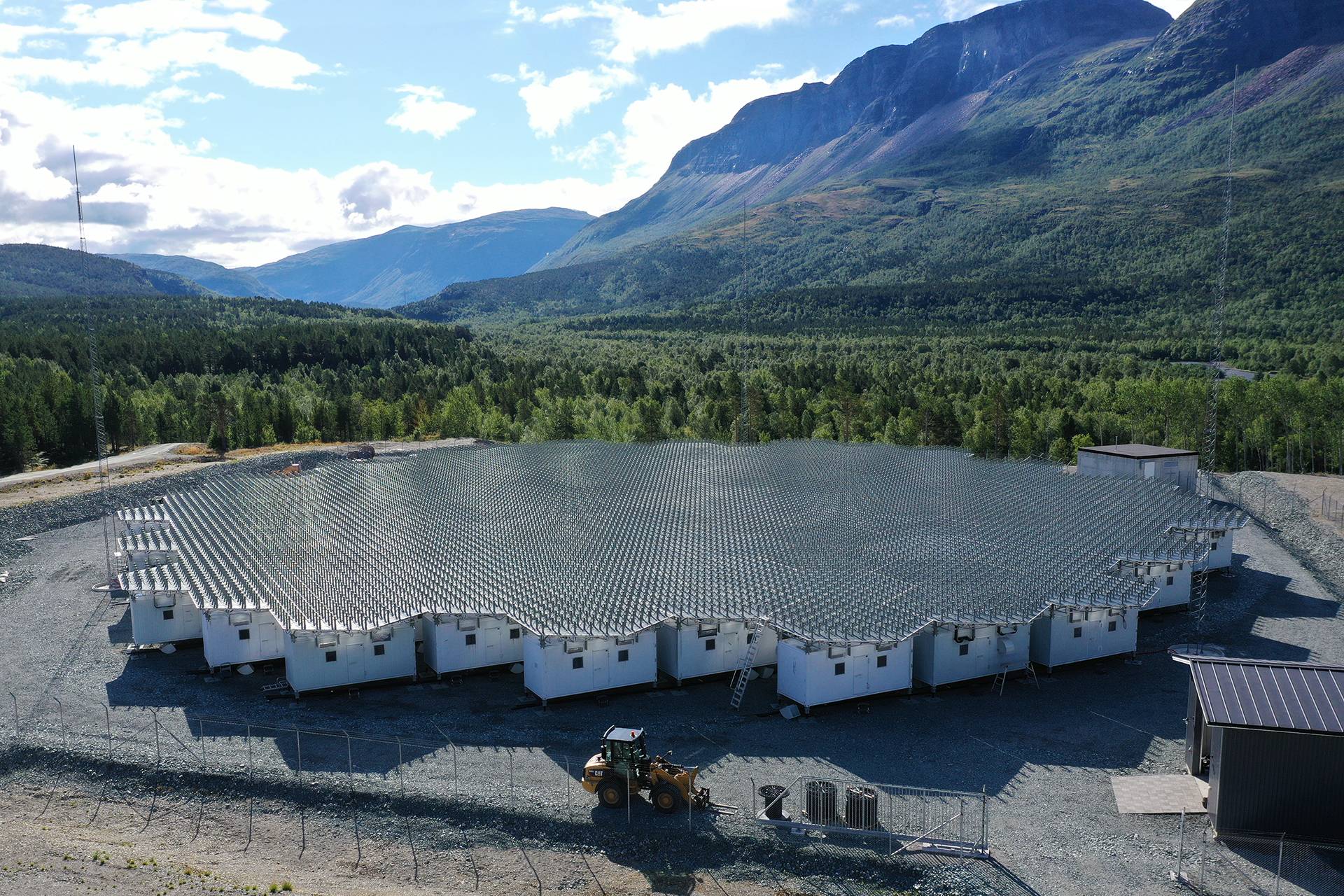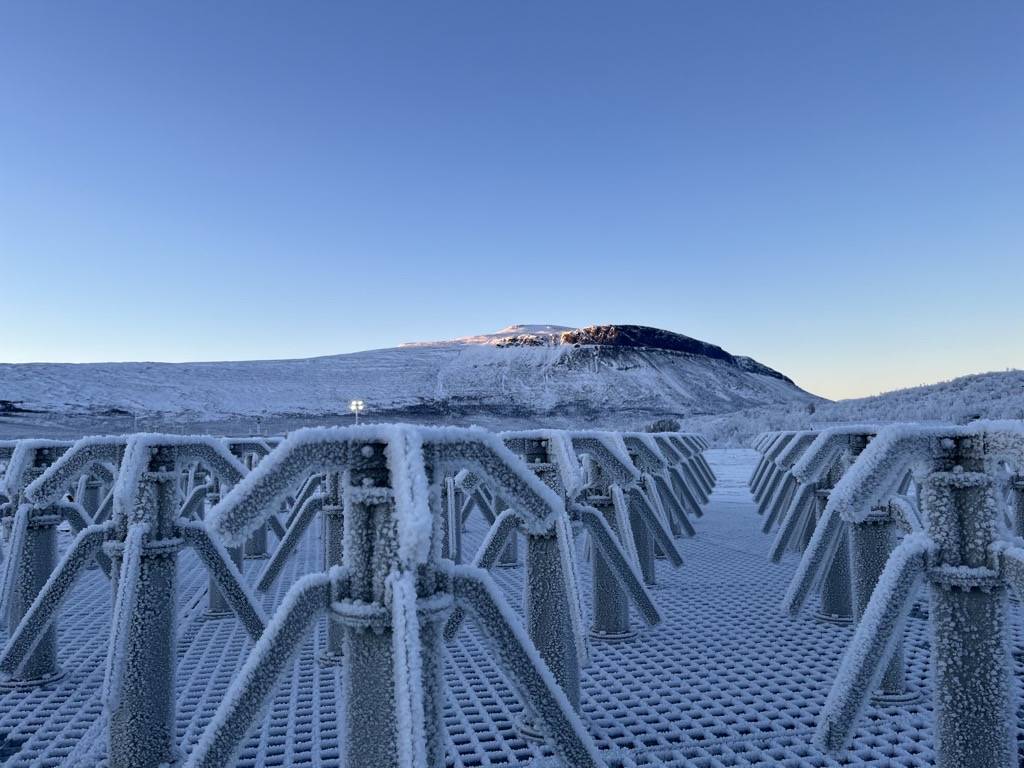 EISCAT_3D, the new Arctic radar for space weather research gets go-ahead for construction
EISCAT_3D, the new Arctic radar for space weather research gets go-ahead for construction
A new international research radar called EISCAT_3D was given the green light to proceed this month, promising a step-change in understanding the effect of solar storms and space weather on the upper atmosphere in the Arctic, including the magnificent Northern Lights. At a total cost of 685 million Swedish crowns, the EISCAT_3D facility will be distributed across three sites in Northern Scandinavia – in Skibotn, Norway, near Kiruna in Sweden, and near Kaaresuvanto in Finland. Each site will consist of about 10.000 antennas fed by a powerful 5 MW transmitter at Skibotn and a receiver at each of the three sites. The EISCAT_3D project will start in September 2017 with site preparations to begin in summer 2018. The radar is expected to be operational in 2021.
EISCAT_3D will be the world’s leading facility of its kind, offering a critically important window to the upper atmosphere and the near-Earth space in the European Arctic. The system will be built by the EISCAT Scientific Association, primarily comprising research councils and national institutes from Finland, Norway, Sweden, the United Kingdom, Japan and China, with additional members from several other countries. EISCAT_3D is the culmination of a 10-year design and preparation phase, supported by the European Union. The selected design is a sophisticated phased-array radar which brings together new capabilities never before combined in a single instrument. As the name suggests, a key capability is to measure a 3-D volume of the upper atmosphere, in unprecedented detail. This is necessary to understand how energetic particles and electrical currents from space affect both the upper and the lower atmosphere (e.g. space weather and auroral phenomena) as well as man-made technologies such as satellites and power grids on the ground.
Dr Craig Heinselman, EISCAT Director says,
“We are very excited to be starting construction of the new EISCAT_3D radar system. Building on over three and a half decades of scientific observations with the legacy EISCAT radars, this new multi-site phased-array radar will allow our international user community to investigate important questions about the physics of the near-Earth space environment. The radar will make measurements at least ten times faster and with ten times finer resolution than current systems. It will also provide fundamentally different measurements which are unique in the scientific world by utilizing, initially, fully flexible receive arrays at two separated locations in the Nordic region in concert with the core transmit/receive array. These systems will let us probe phenomena such as the aurora borealis in three dimensions and, in concert with a variety of other measurements, will allow us to uncover the fundamental effects of phenomena such as space weather. EISCAT_3D uses modern analog and digital technologies that enable flexibility now and a path forward for implementing new ideas that emerge from future discoveries. It truly represents a platform for the next generation of space scientists to build upon.”
Contact information:
Director Dr. Craig Heinselman, phone: +46 70 270 90 34, email: craig.heinselman@eiscat.se
Staff Scientist Dr. Anders Tjulin, phone +46 70 660 89 72, email: anders.tjulin@eiscat.se
Figures:
Figure 1
https://eiscat3d.se/sites/default/files/EISCAT_3D_NIPR_2.jpg

A schematic figure of the EISCAT_3D transmitter. Each of the 109 hexagons contains 91 antenna elements. The diameter of the area covered by one antenna field is about 80 m.
Figure 2
https://eiscat3d.se/sites/default/files/EISCAT_3D%20Map3.jpg

Planned locations of EISCAT_3D stations: the transmitter-receiver in Skibotn Norway, and the two receive-only stations near Kiruna Sweden and near Kaaresuvanto Finland.
Background Notes:
The EISCAT Scientific Association, www.eiscat.se, provides state-of-the-art instrumentation to scientists in its associated countries for investigations into the upper atmosphere and ionosphere above northern Scandinavia. The EISCAT radars can be found in both mainland Norway, Finland, and Sweden and on Svalbard. EISCAT has supported scientific investigations since 1981 and continues to provide top quality instruments and data products to researchers from around the globe. Areas of specialization include quantifying the effects of Space Weather on Earth’s upper atmosphere, understanding the basic mechanisms of the formation and activity of the aurora borealis, and looking for long-term trends in the ionospheric response to effects on the sun and in the solar wind.
Contact info for EISCAT Scientific Association:
Director Craig Heinselman, phone: +46 70 270 9034, email: craig.heinselman@eiscat.se
Staff Scientist Dr. Anders Tjulin, phone +46 70 660 89 72, email: anders.tjulin@eiscat.se





